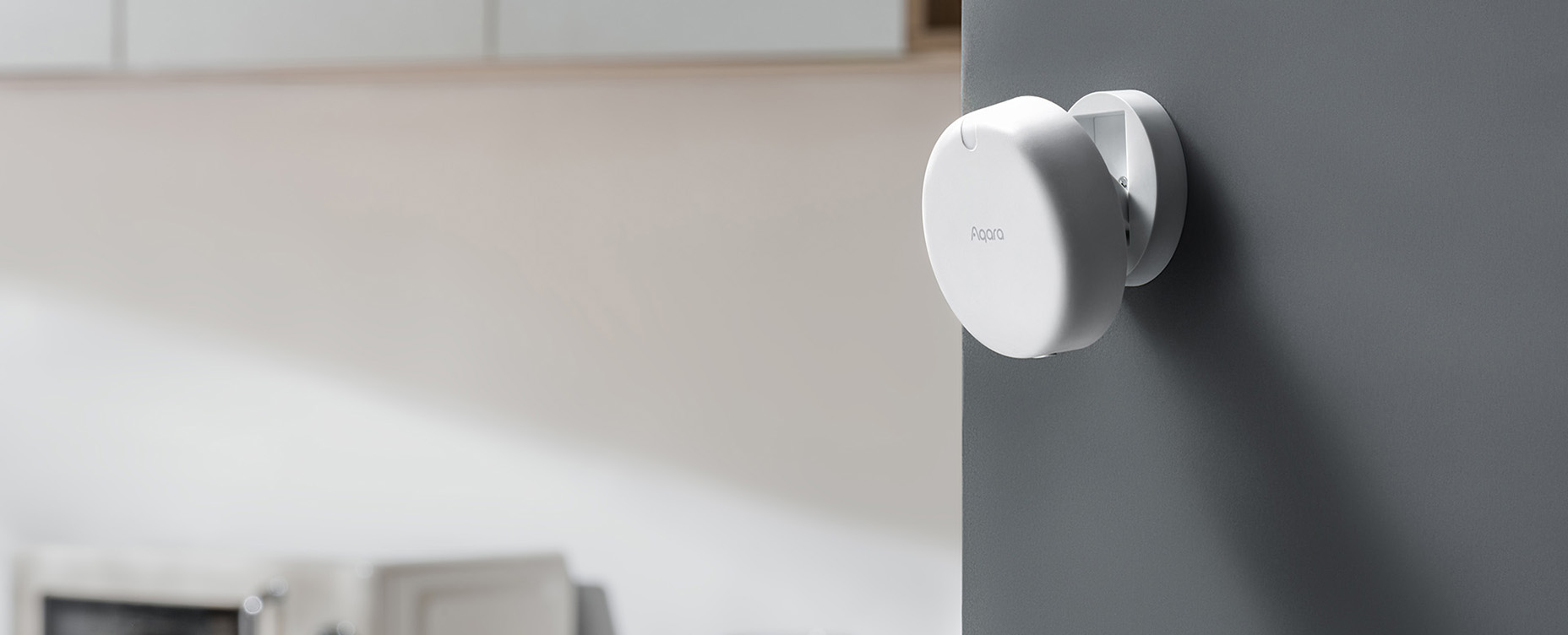
mmWave vs PIR — Presence and Motion Sensors Explained
If you’ve ever had to wave your arms frantically to keep the lights on while sitting at your desk, you’ve seen the limitations of traditional motion sensors. These devices use Passive Infrared (PIR) technology, which detects your arrival but struggles to sense your ongoing presence.
Now, a more advanced technology called millimeter wave (mmWave) is changing the game by offering true presence detection in a smart home. But how exactly are they different, and which one is right for your smart home?
Passive Infrared (PIR) at a Glance:
- Technology: Detects changes in infrared radiation (body heat).
- Best for: Detecting movement, like walking or waving.
- Sensitivity: Lower; can’t detect small motions like breathing.
- Vision: Requires a direct line of sight; cannot see through walls or furniture.
- Power: Features low power consumption, making it ideal for battery-powered devices.
- Cost: Very affordable.
Millimeter Wave (mmWave) at a Glance:
- Technology: Uses millimeter waves to detect movement and static human presence
- Best for: Detecting static presence through micro-motions like breathing or typing.
- Sensitivity: Extremely high; can tell if a person is in a room even if they are perfectly still.
- Vision: Can see through light materials like drywall, curtains, and wood.
- Power: Higher power consumption than PIR, usually wired power supply.
- Cost: More expensive.
What is a PIR Sensor?
A PIR sensor is the most common type of motion detector. As the name suggests, it passively sits and waits for an infrared source to appear in its field of view. When you walk into a room, your body, which is warmer than the background, creates a sudden change in the room’s heat signature. The PIR sensor immediately detects this change and triggers an action.
This makes PIR sensors incredibly effective at detecting when someone enters or leaves a room. However, PIR motion sensors fall short if the heat source stops moving and becomes part of the background scenery. To the PIR sensor, a person sitting still is no different from a chair and it will eventually decide the room is empty.
How PIR Motion Sensors Work
A PIR motion sensor operates as a passive device, meaning it does not send out any signals. It works by reacting to the change of infrared energy or heat in its surroundings. The key component inside is a pyroelectric sensor, engineered to react only to sudden changes in heat, but not to consistent temperature levels. This is the main reason PIR sensors “turn blind” when everything is static in its field of view.
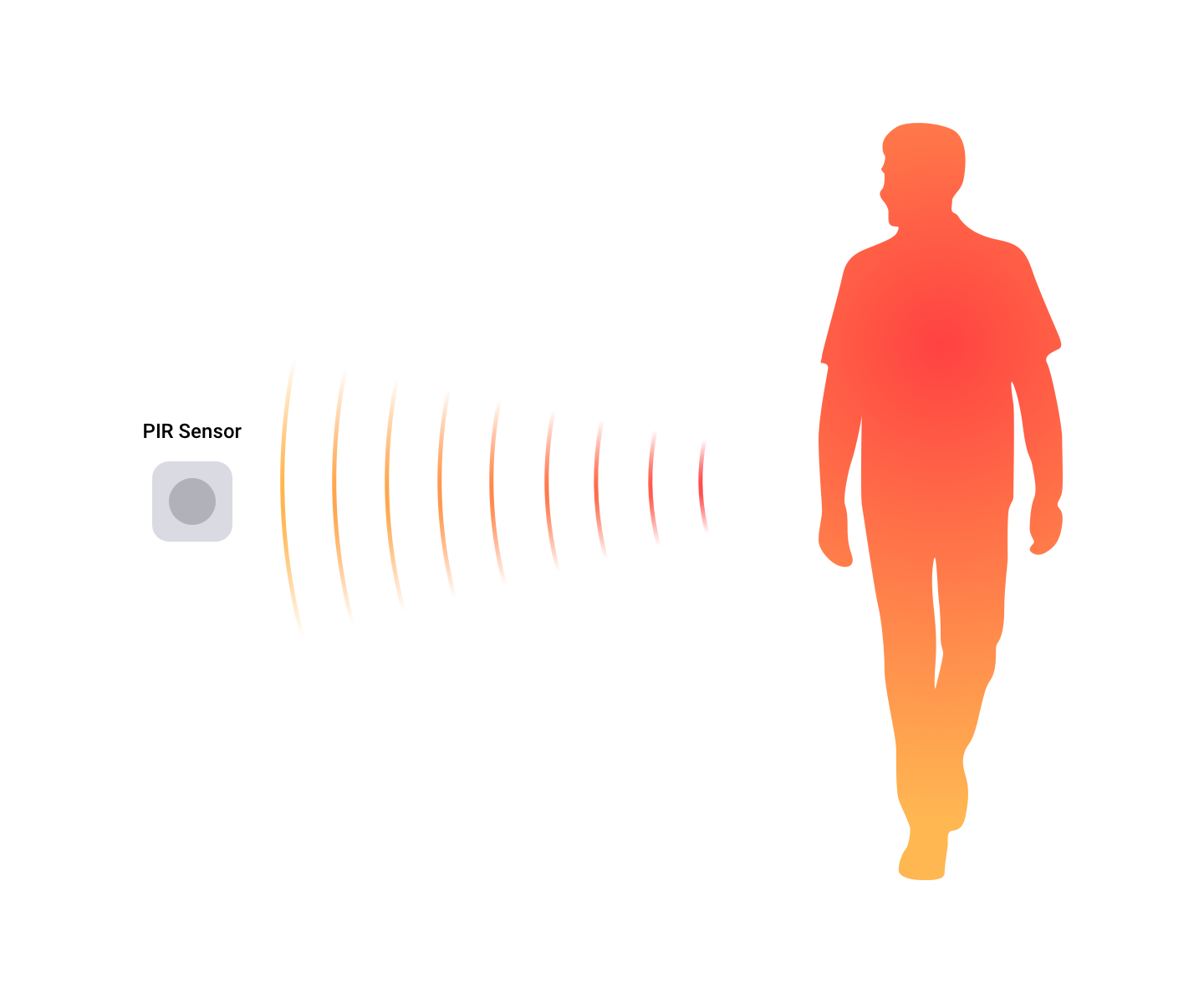
The familiar domed plastic cover found on most PIR sensors is a critical component called a Fresnel lens. Its job is to collect heat from a wide area and focus it onto the small internal sensor. The lens is built with many segments that create a grid of invisible detection zones in the room. When a person moves from one zone to another, the lens directs their body heat across the sensor’s internal elements. This rapid shift is what the sensor identifies as a motion event.
While this process is highly effective for detecting movement, it also explains the sensor’s main limitation. If you stay still, your heat signature remains in one zone and the sensor, seeing no change, will eventually decide the room is unoccupied.
What is an mmWave Sensor?
An mmWave sensor is a newer, more advanced type of device that uses radar technology. It actively sends out tiny, high-frequency radio waves that bounce off objects in the room and reflect back to the sensor. By analyzing this reflection time, known as the “echo time,” it can detect even small movement with incredible precision.
Its superpower is detecting micro-motions. Even when you’re sitting perfectly still, your chest moves as you breathe. An mmWave sensor can detect this slight movement and therefore knows you are still present. This makes it a true presence sensor, not just a motion sensor. Because it uses radio waves, it can also “see” through certain materials like drywall or curtains, meaning it doesn’t always need a clear line of sight.
How mmWave Presence Sensors Work
An mmWave presence sensor functions as a miniature radar system. Its operation is based on a principle called the Doppler effect, which is why mmWave sensors are often called Doppler radars.
To detect presence, the sensor transmits a continuous wave of high frequency radio energy. When this wave hits an object in its field of view, it reflects back to the sensor. If the object is stationary the reflected wave has the same frequency, but if the object is moving the frequency of the returning wave is slightly shifted. The sensor is sensitive enough to detect these tiny frequency shifts caused by the micro motions of a person, making it ideal for reliable static presence detection.
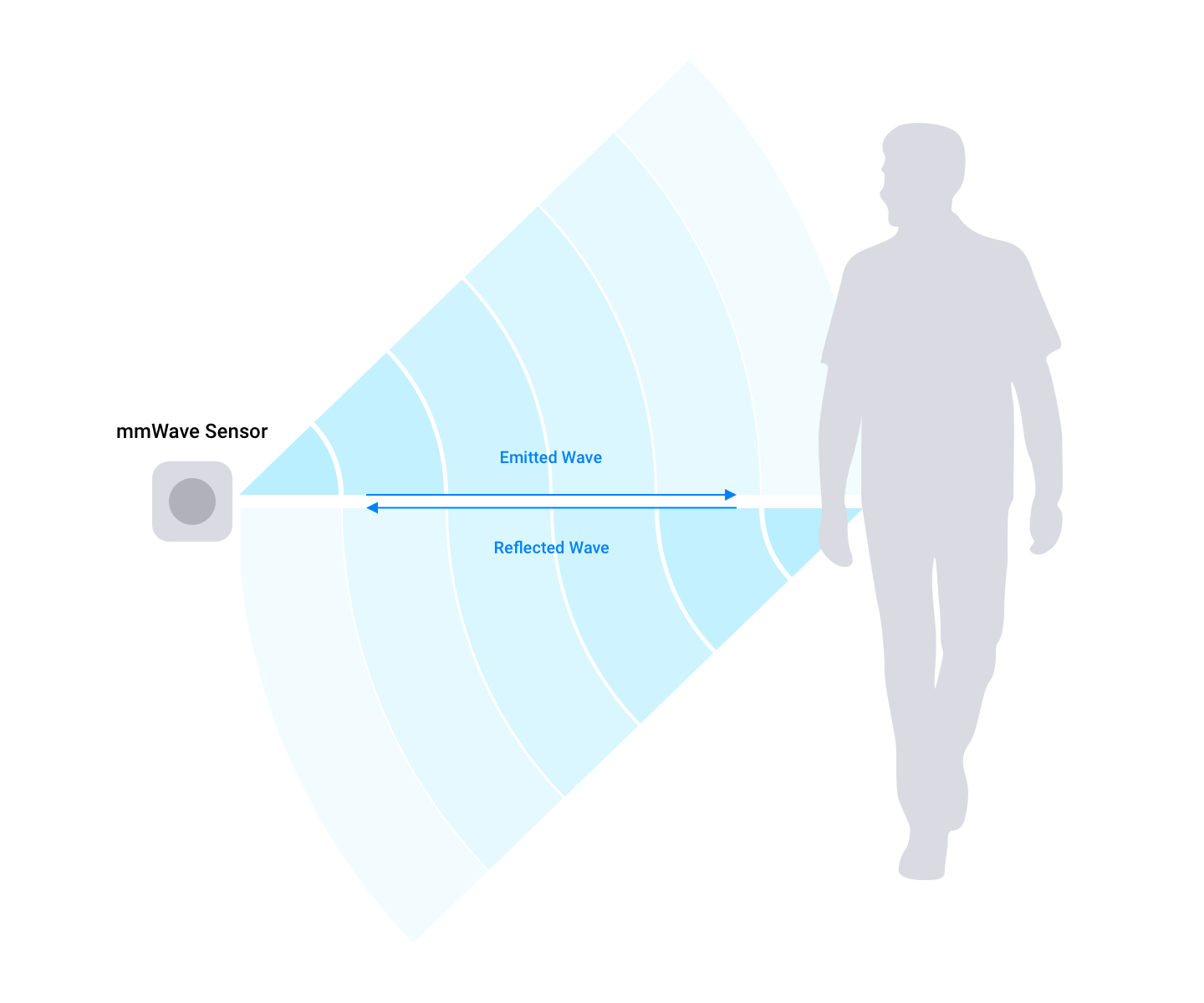
The specific frequency used by the sensor defines its performance and capabilities. In smart home applications, they generally fall into three main categories.
The 5.8 GHz band is primarily focused on maximum reach. Its signal travel the farthest and is effective at passing through furniture and other obstacles, making it suitable for covering large or complex areas. The trade-off for this broad coverage is a loss of detail. It is less sensitive than other bands and can struggle to detect the small movements needed for true presence sensing.
The 24 GHz band is the sweet spot for smart home presence detection, simply because it offers a well-rounded performance. It is significantly more precise than 5.8 GHz and can reliably track fine motions like breathing within its field of view. It provides excellent room-scale coverage and its signals do not penetrate solid walls. Some 24 GHz sensors support detection zones and multi-person tracking, such as the Apollo Automation MTR-1.
The 60 GHz band is useful for high precision applications. Its main advantage is an exceptional sensitivity that can detect very subtle movements and track multiple people in a small area. This focus on detail comes with limitations, as the signal has a shorter range and can be blocked by objects. It is the best choice when you need to monitor a specific zones with extreme accuracy, like a bed for sleep tracking or an office desk.
What is a hybrid PIR and mmWave Sensor?
Recognizing the unique strengths of each technology, some manufacturers have developed hybrid sensors that combine both a PIR and an mmWave sensor into a single device. This approach aims to offer an ideal solution by leveraging the instant reaction speed of the PIR sensor for initial detection while using the precision of mmWave for sustained presence.
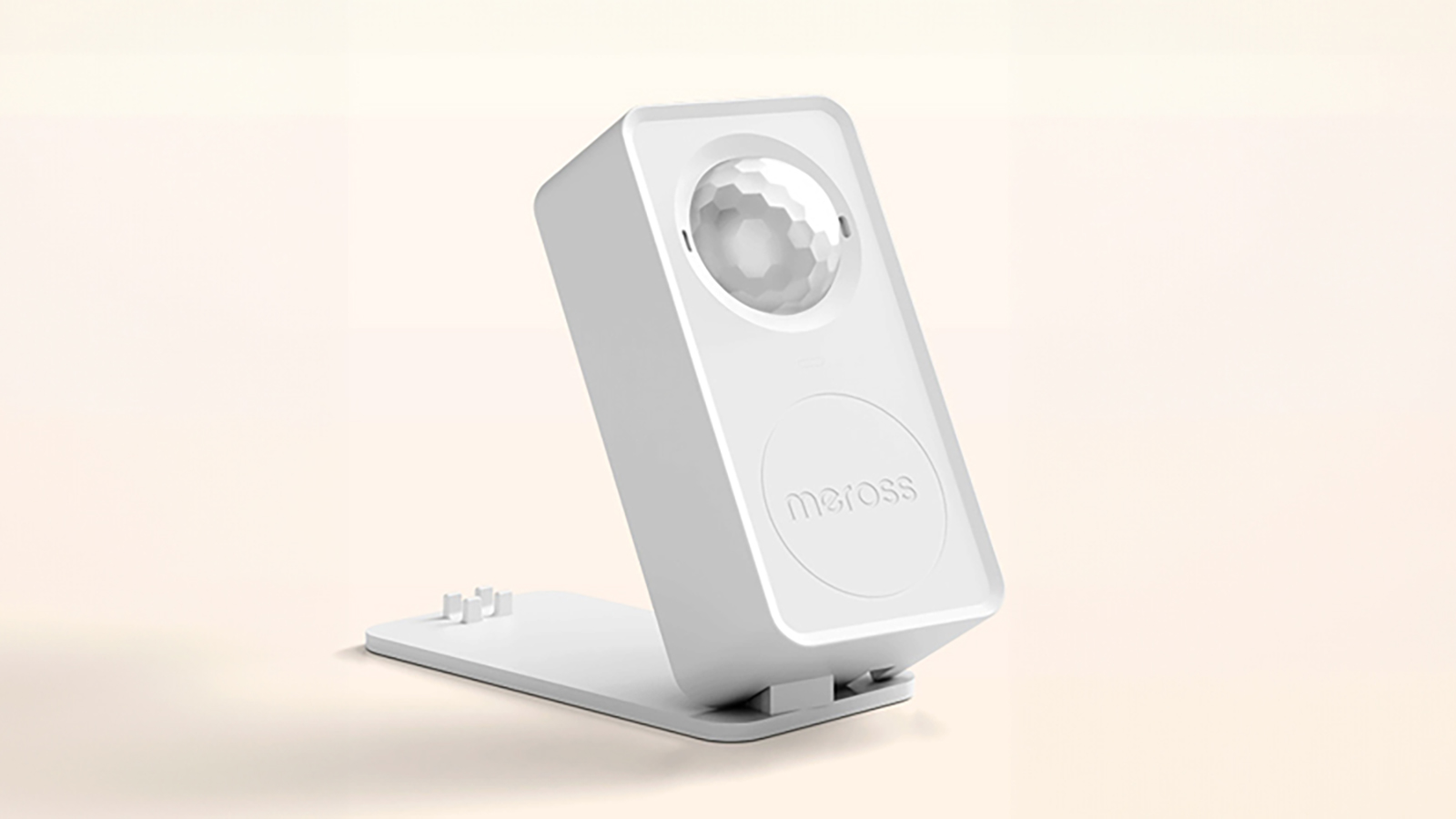
The operational logic behind these devices is highly efficient. When you enter a room, the PIR sensor instantly detects your motion and triggers a response like turning on the lights. This same PIR trigger acts as a wake up call for the more power hungry mmWave radar. The mmWave sensor then takes over the task of monitoring the room for your static presence. Once it confirms the room is empty, it goes back into a low power sleep mode, leaving only the PIR sensor active. This clever handover allows these advanced devices to provide true presence detection in a more energy efficient way.
Key Differences: PIR vs. mmWave
While both sensors can detect motion, their underlying technologies create important differences in performance and capability. Understanding these distinctions is key to choosing the right device for your needs.
Core Technology
A PIR sensor is a passive thermal detector. It watches for the moving heat signature of a person. An mmWave sensor is an active radar system. It sends out a signal and analyzes its reflection to map objects and movement.
Detection Speed
PIR sensors react almost instantly when a person crosses into their field of view. mmWave sensors also detect initial entry very quickly, but can be slower than PIR. Their signal analysis may introduce a slight delay as they work to confirm true presence and filter out potential false triggers.
Sensitivity and Precision
PIR sensors excel at detecting large movements like a person walking into a room. They cannot however detect fine motions. mmWave sensors are far more sensitive. They can register micro movements like breathing, making them capable of true presence detection even when a person is still.
Coverage and Obstacles
A PIR sensor requires a direct line of sight to its target and its view is blocked by common objects like furniture or glass. mmWave signals can pass through many light materials such as drywall and curtains, giving it more flexible placement options and the ability to detect presence without a clear view.
Susceptibility to False Triggers
PIR sensors can sometimes be falsely triggered by sources of rapid heat change like direct sunlight or heating vents. mmWave sensors are immune to heat but can be triggered by other moving objects like ceiling fans or rustling curtains if not configured properly.
Power Usage
The passive nature of PIR sensors allows them to operate with very little energy, making them ideal for long lasting battery powered devices. The active radar in mmWave sensors requires more power so they typically require a constant power source.
Cost and Configuration
A PIR sensor is generally a low cost, “set and forget” device with minimal user settings. An mmWave sensor is a pricier product with a higher level of configurability. It usually includes adjustable settings for sensitivity or range, offering more control but requiring some initial configuration.
Choosing the Right Sensor for the Job
While mmWave sensors are superior static occupancy detectors, this does not mean traditional PIR motion sensors are obsolete. Each technology has specific strengths that make it the ideal choice for certain situations in your smart home. The key is to match the sensor’s capabilities to your automation needs.
When to Use a PIR Motion Sensor
PIR motion sensors are perfect for areas of your home where you need to track temporary movement or transition. Think of hallways, staircases, garages, and walk in closets. In these spaces, your automation goal is simple. You want to trigger an action when someone enters or leaves. A PIR sensor’s ability to quickly detect motion makes it both a reliable and highly cost effective choice for these tasks.
Furthermore, their extremely low power consumption means they can run on batteries for years. This offers incredible placement flexibility, allowing you to mount them anywhere without worrying about availability of outlets nearby.
Looking for the best PIR motion sensor for your smart home?
Check out our PIR Motion Sensors Best Buy Guide.
When to Use an mmWave Presence Sensor
An mmWave presence sensor is great for any room where you or your family spend time while remaining relatively still. This makes it the superior choice for living rooms, home offices, bathrooms and bedrooms. In these environments, an mmWave sensor will keep the lights on and the automations running while you are reading, working at a computer, or watching television. Its ability to detect your subtle presence prevents the common frustration of a room going dark when you are still in it.
Its advanced radar processing requires more energy, so mmWave sensors need a constant wired power source like an USB connection. This is an important consideration for placement as you will need to plan for access to power.
Looking for the best mmWave sensor for your smart home?
Check out our mmWave Presence Sensors Best Buy Guide.
Intelligent Presence Detection with Homey
A truly responsive smart home uses the best sensor for each job and Homey is the key to making them work together. Homey supports both traditional PIR motion sensors and modern mmWave presence sensors from brands like Aqara, Apollo Automation, Eve, Frient, IKEA, Thirdreality, Sonoff, Meross, bringing them under one cohesive ecosystem.
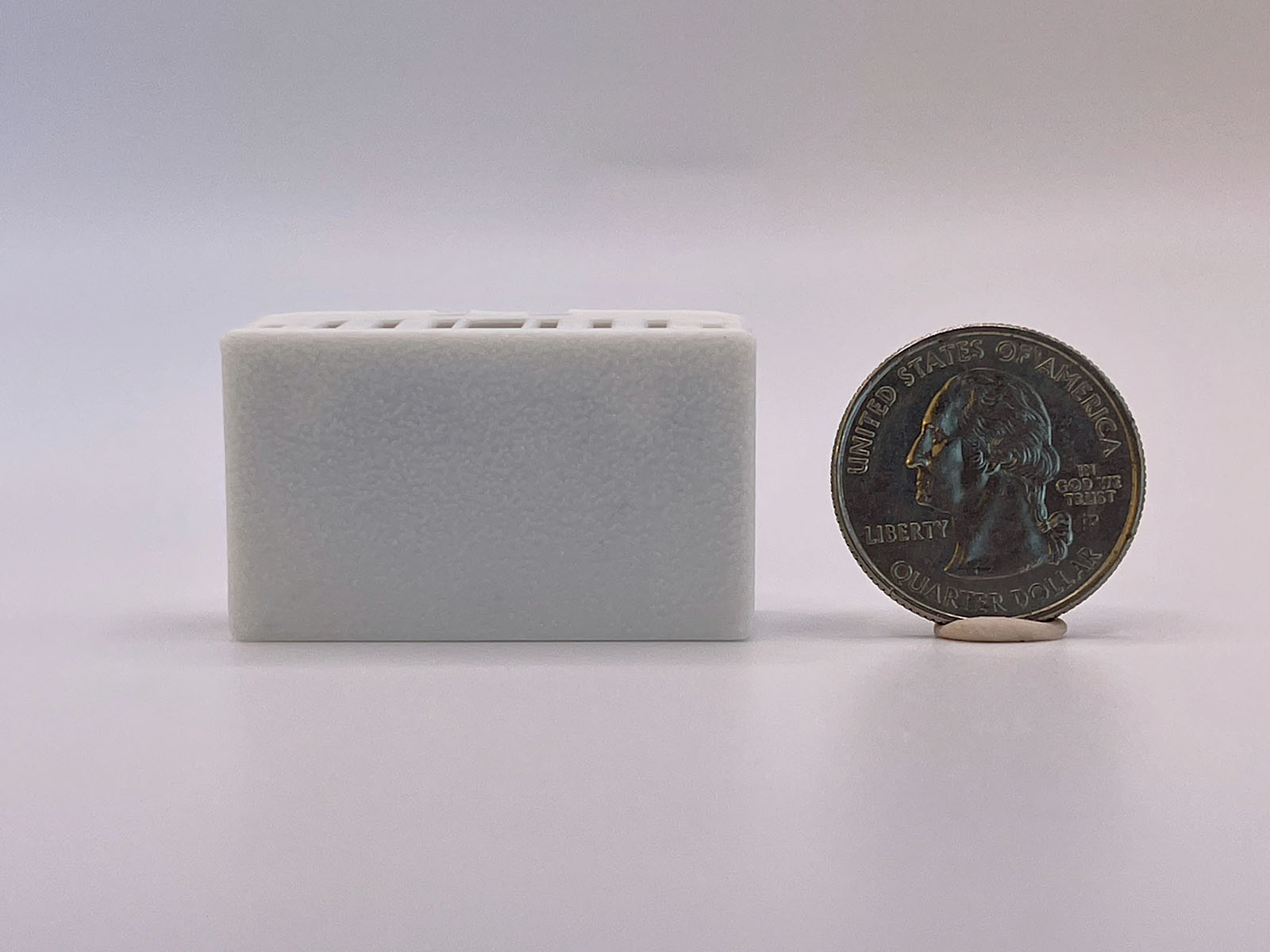
For example, you can use a battery-powered PIR sensor to instantly trigger lights, then have an mmWave sensor take over to keep the lights on while you watch TV. Homey manages this seamless handover with its powerful Flows system, letting you build a smart home that is perfectly tailored to your lifestyle.
Summary
Ultimately, the smartest choice is not to pick one sensor over the other, but to use both strategically. PIR sensors are the simple, battery-powered solution for instant motion detection in transitional areas like hallways and entryways. mmWave sensors provide sophisticated, wired-in presence detection for living rooms and offices where you are often sitting still.
A powerful smart home hub like Homey is what connects these different technologies, letting you combine their unique strengths to create a single smart home system that is truly responsive and intuitive.






